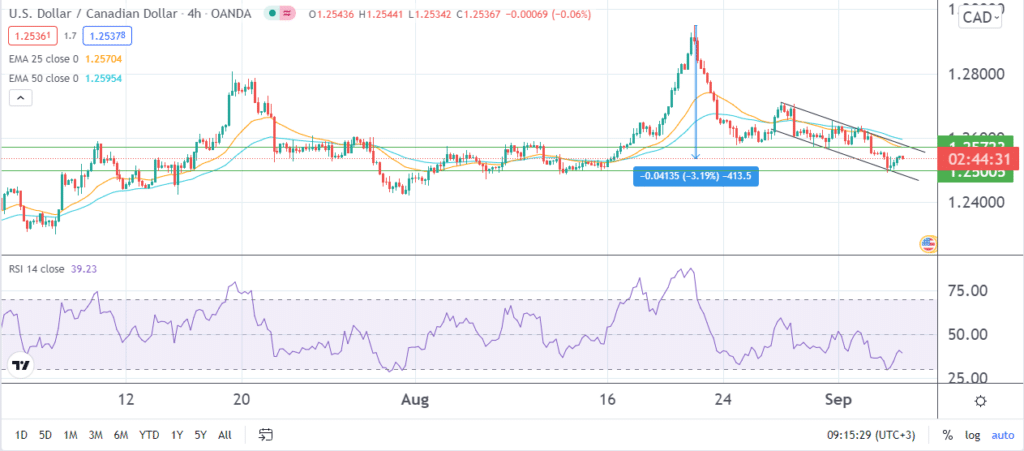
- Investors are keen on the BOC interest rate decision scheduled for Wednesday.
- As a commodity currency, the declining oil prices have buoyed USDCAD above 1.2500.
- The US JOLTs’ job openings will further impact the pair in the ensuing sessions.
BOC interest rate decision
One of the key drivers of USDCAD in the new week is the Bank of Canada’s interest rate decision scheduled for Wednesday. On the one hand, Canada is one of the countries that is well-positioned to deal with the fourth wave of COVID-19.
According to the Public Health Agency of Canada (PHAC), over 84% of the eligible populace has gotten at least one shot, while 77% are fully vaccinated. Nonetheless, recent data has shown a contraction of the country’s economy.
In the past week, Statistics Canada indicated that the GDP had declined by 0.3% in the second quarter QoQ compared to the expansion of 1.4% in the year’s first quarter. At an annualized rate, the economy shrunk by 1.1% after the previous expansion of 5.5%. BOC had expected the economy to grow by 2% in the second quarter.
Other than exports, the decline in housing investment was largely behind the economic contraction in Q2’21. In particular, residential investment plummeted by 12.4%. Based on these figures, BOC will likely hold a dovish tone in this week’s meeting. Analysts expect it to leave interest rates unchanged at 0.25%. Besides, it may hold back on further tapering of its asset purchases.
On the part of the US dollar, JOLTs job openings scheduled for release on Wednesday will further impact the pair. Analysts expect a reading of 9.281 million, which is lower than the previous 10.073 million. A lower-than-expected figure will further weigh on USDCAD.
Crude oil price
As a commodity currency, the Canadian dollar often finds strength in rising oil prices. In the ensuing sessions, crude oil price movements will also have an impact on USDCAD. At the time of writing, WTI futures were down by 0.93% at $68.56 after hitting an intraday high of $70.50 on Friday.
Notably, supply and demand forces continue to drive the oil market. Over the weekend, Saudi Aramco, Saudi Arabia’s state oil company, indicated that it would reduce October’s official selling prices for the product sold in its major buying region – Asia. The cut of $1 per barrel is higher than expected.
Saudi Arabia’s oil price cuts have triggered demand concerns. The decision comes a few days after OPEC+ decided to continue with its plan to increase monthly production. This week’s US inventory data will further influence the commodity’s price movements. Oil’s curbed gains will likely offer support to the currency pair.
USDCAD technical analysis
USDCAD has been on a decline since late August, when it hit its highest level year-to-date. Since then, it has dropped by about 3.19%. However, the currency pair is still buoyed above 1.2500, which has been a crucial support zone since March.

At the time of writing, USDCAD was up by 0.12% at 1.2539. It has bounced back after entering the oversold territory on Friday with an RSI of 29. Nonetheless, it is still within a descending channel. On a four-hour chart, it is trading below the 25 and 50-day Exponential Moving Averages with an RSI of 39.
I expect the currency pair to ease as investors focus on BOC’s interest rate decision. As such, it will likely trade within a tight range of between the psychological level of 1.2500 and the 25-day EMA at 1.2572.
As the week unfolds, a dovish tone from the Canadian central bank may push the pair outside of the descending channel to along the 50-day EMA at the resistance zone of 1.2600. On the flip side, a hawkish stance may result in a further decline to the support level of 1.2400.








Leave a Reply